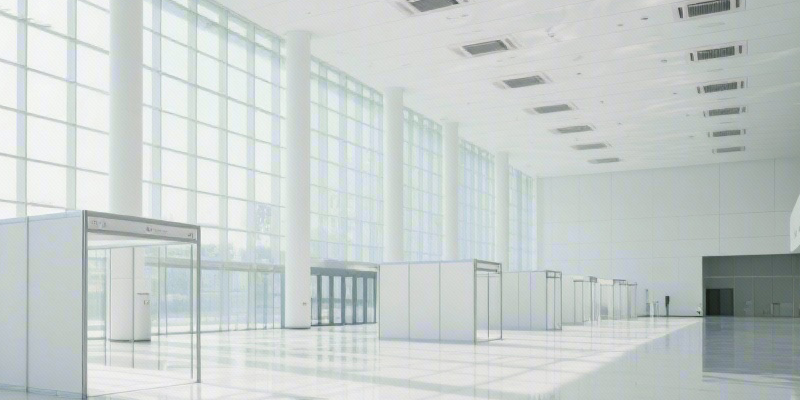In large venues, how to make airflow more comfortable and energy-efficient has always been the core issue in air conditioning design.
I. Special challenges of air conditioning in large spaces
1. Large spatial scale: Exhibition centers and sports venues usually have a height of tens of meters or even dozens of meters, making it difficult for traditional air supply methods to cover the entire area.
2. High population density: When there is a concentration of people, a large amount of heat and moisture is generated, and central air conditioners need to respond quickly to load fluctuations.
3. Wide range of uses: Both to undertake conferences and exhibitions, but also to organize sporting events or performances, different activities for which the requirements for temperature and comfort are significantly different.

II. Common airflow organization strategies
1. Up-sending and down-returning: The cold air is transported from the high place, gradually sinking and covering the crowd activity area, which is suitable for large spaces such as exhibition halls and stadiums.
2. Bottom supply and top return: Arrange supply air outlets on the ground or in the seating area, allowing air to flow from bottom to top. The cold air directly acts on the areas where people are active. The refrigeration efficiency is higher.
3. Zoned air supply: By zoned control of the air conditioning system, the temperature requirements of different functional areas can be met. Suitable for areas with a large flow of people and venues in other areas that are relatively spacious.
4. Displacement ventilation: Cold air is slowly introduced into the area where people are active, and the polluted air rises and is then discharged. The air quality has improved significantly.
It is often used in conference halls and theaters.
III. Key considerations in airflow organization design
1. Building structure: Ceiling height and spatial form jointly determine the flow direction of airflow.
2. Crowd distribution: It is necessary to consider the differences in the number of people in the audience area, the activity area, and the stage area.
3. Using flexibility: Relying on an adjustable tuyere and intelligent control system, it meets the needs of different scenarios.
4. Keeping energy balance: Design with energy-saving equipment and green building standards to reduce operating costs.
The air distribution of large-space air conditioning is not a 'single mode' but a comprehensive scheme based on building structure and use demand.
We are a professional air conditioning manufacturer in China; please contact us freely if you want to design your large-space airflow organization.
Copyright @ 2025 GUANGZHOU SOUXIN APPLIANCES CO., LTD All Rights Reserved.
 Network Supported
Network Supported
Sitemap / Blog / Xml / Privacy Policy

Hi! Click one of our members below to chat on